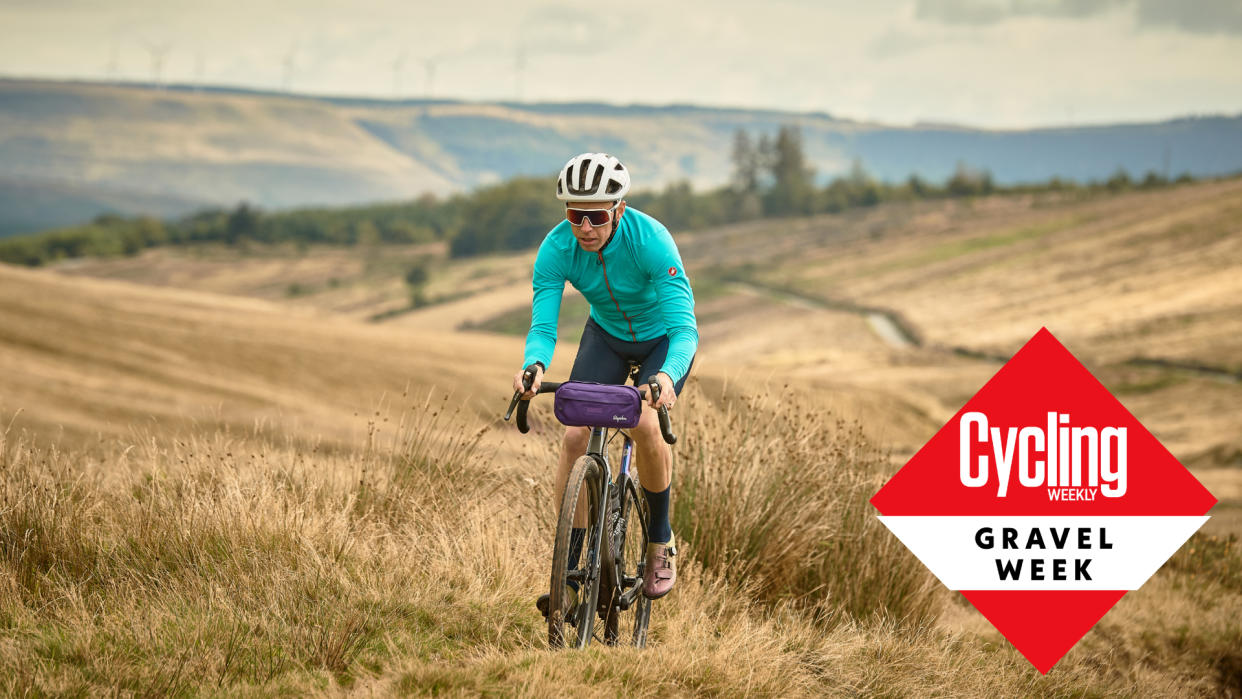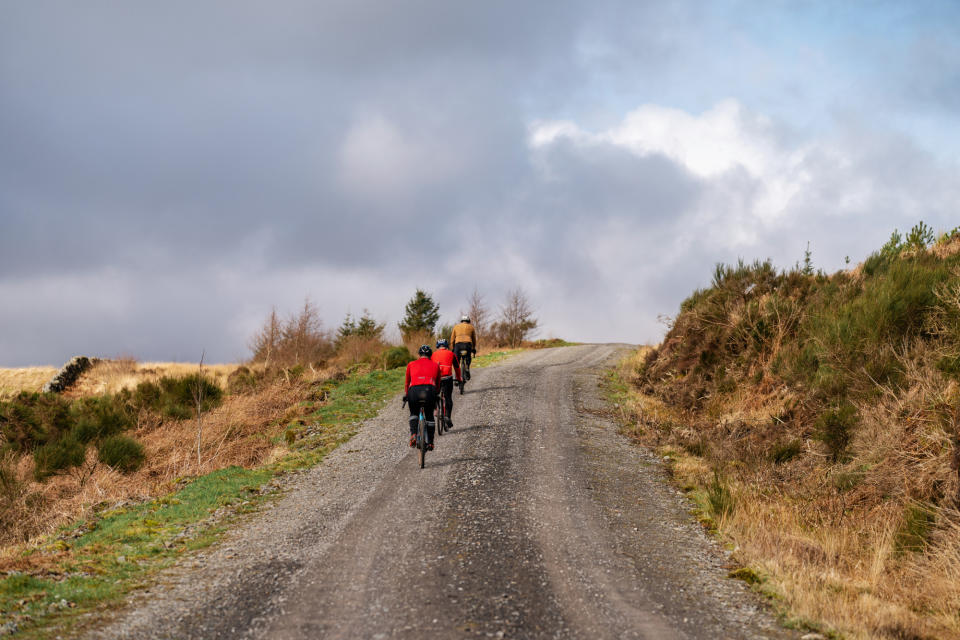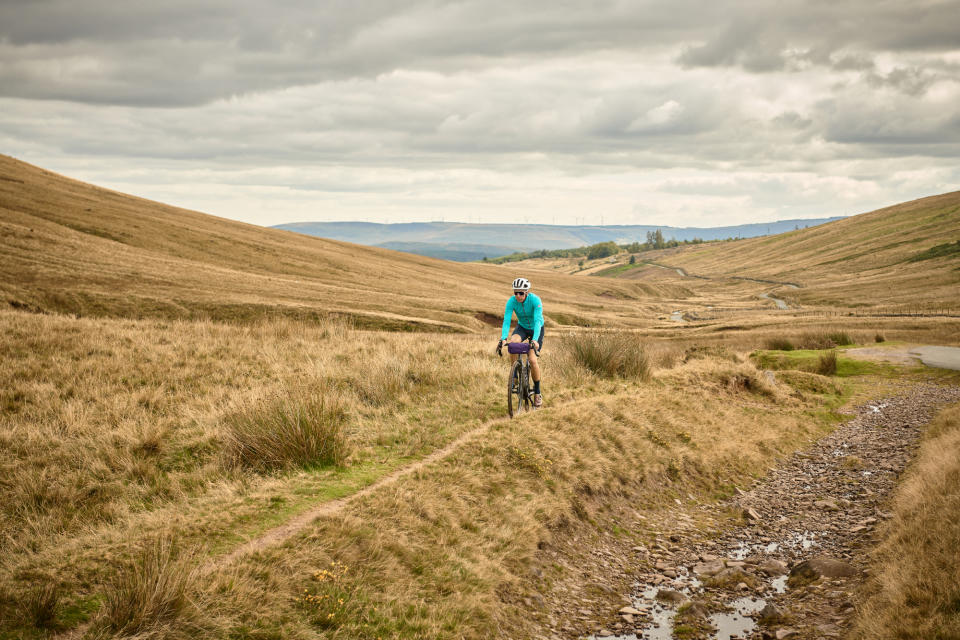Is it really worth getting a power meter for gravel riding?

Gravel riding. It’s all about ‘the experience’ right? Getting from A to B, getting away from it all, avoiding traffic - you might think of it as a sport a million miles away from the cycling training zones, intervals and watts that are more commonly associated with road riding. However, could riding with a power meter help your off road riding? Let’s find out.
Right now, there’s an exploding gravel race scene which is growing every year and we’re seeing ever more pros taking to the rough stuff - and bringing their roadie training tactics with them, which includes riding with power.
If you’re solely focused on optimising your fitness through structured training, one of the best power meters for cycling is an invaluable tool. But what about riders who fall somewhere in between? And is it one of the best gravel bike upgrades?
We’ll take a run through what you stand to gain from using a power meter off-road and whether the benefits are likely to be worth it for you...
What is power and how does it work?
First off, let’s cover the fundamentals: a power meter measures the force you’re pressing down on the pedals, giving a precise measure of exactly how much work you’re doing. This is measured using a strain gauge (a bit like a set of kitchen scales) and the location of the strain gauge can be in a variety of positions, although typically it’s either in the pedals or the crank arms.
Having a handle on exactly how hard you’re working means your training and performance can be much more targeted - which in turn enables you to get the best out of what your body is capable of.
1. Pacing an effort

On the road, one of the key benefits a power meter can provide is assistance in pacing your effort. With the instant feedback of objective numbers, it’s much easier to make sure you don’t go too hard at the start of an effort. You can also clearly see if your power is dropping off and the end, which can help rekindle your motivation for one last push.
Off-road, though, it can be much harder to use a power meter to pace an effort in quite the same way.
For starters, if you’re riding particularly technical terrain, you can’t really afford to be looking down at your headunit quite so much - and it’s a safe bet that you’ll be much faster if you focus on taking the cleanest line instead.
In addition to that, you’re often not putting in a linear effort when riding off-road. There might be a super steep ramp at one point in the climb which you just need to give everything on to keep the wheels turning - with the rest of the climb just being about giving just whatever you have left.
With that said, where the going is less technical and the trails a bit more open and smooth, a power meter can be just as effective for pacing an effort as out on the road.
So, regarding a power meter’s potential for helping you with your pacing, it is worth considering the terrain and use-cases you most often experience to gauge just how much of a benefit you will actually get from a power meter.
Whether or not you’re looking at the data as you ride, the numbers that are recorded are still hugely valuable, which leads neatly on to the next point…
2. Riding in your zones

A well structured cycling training plan will have you riding at a range of different intensities, from steady endurance to more intense intervals. On the road, aside from particularly steep sections of road and junctions, it’s generally easy enough to stick to the right training zone - whether that’s riding hard or taking it easy.
But, as I’ve mentioned, when riding off road, you often end up having to ride the terrain rather than the numbers - a steady Zone 2 endurance effort will likely see you stall on a steep rooty climb or a long boggy section. So, with that in mind, how much of a benefit does a power really stand to provide in this regard when riding off-road?
Well, once you’ve done a few of your local loops with a power meter, you’ll start to build up a picture of what zones you naturally end up riding in on those particular loops. From there, you can start to select the route for the kind of efforts you need to put out that day - rather than simply trying to make your session work with any old loop.
Super steep climbs are good for forcing a sustained top-end effort, while twisty trails can be great for getting in more of a tempo or threshold effort. So, power meters are a great help for guiding your training when riding off-road, but it can be a bit more involved than simply just staring down at your stem.
3. Training load
One of the most useful aspects of power meters is how they allow you to accurately track your training load. Training load is calculated based on the intensity and duration of your ride, producing a number which describes just how hard that session was.
This can give you a valuable insight into your fitness, enabling you to spot when you might have crammed in too many hard sessions and need some recovery, as well as helping you keep on top of your training and ensure you are doing enough.
Whilst a heart rate monitor can sometimes be pretty close to a power meter in terms of gauging your effort on the road (with the efforts typically being longer and more sustained), the lag between pressing harder on the pedals and your heart rate rising means that only a power meter will pick up the short and spiky efforts which are characteristic of riding on rougher terrain off-road.
With a power meter capturing your efforts in much more granular detail, you’ll have a clearer picture of where your training really stands and how much work you’ve really done. Otherwise, it can be easy to find yourself slipping into overtraining, with your rides actually being more intense than what your training app can tell.
Should you ride with a power meter off-road?
There are tangible benefits of using a power meter off-road, although the use-cases are a little more limited than when riding on tarmac. The most pertinent question is whether those benefits of more accurate training are really worth the investment.
A few years ago, the answer for all but the most data-wedded gravel riders would have been no - SRM’s X-POWER SPD power meter pedal cost a whopping $899 for just the single-sided version.
But since then the options out there have broadened considerably. Garmin offers its Rally SPD XC power meter pedals for $699 / £599.99 (with single-sided power readings) and 4iiii sells a left-side only GRX power crank for just under $350 / £300.
For these prices, we think that a power meter could be an excellent upgrade to a gravel bike - if you’re of the performance oriented mindset. And if you haven’t tried structured training before, this is likely to make you much faster than spending an equivalent amount on wheels, although there is a bit of a learning curve to getting the best out of a power meter and your training.
But if your cycling goals are much broader than the speeds at which you ride, then a power meter probably wouldn’t be worth the price. One of the best heart rate monitors is a cheaper option and still provides valuable fitness insights - especially for longer distance riding and sub-threshold efforts. Or, if you care more about exploration than performance, then you would most likely be better off saving your money on this tech - but I’m sure you already knew that!

